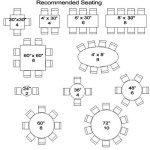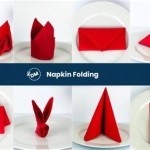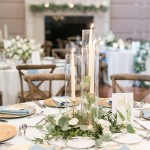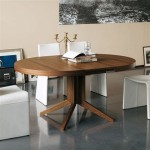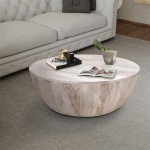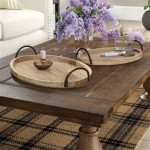How to Sew a Table Runner and Placemats
Creating a custom table runner and placemats is a rewarding project that can elevate any dining experience. This guide provides a step-by-step process for crafting these elegant additions to your table setting.
Choosing Fabrics and Gathering Supplies
The first step involves selecting appropriate fabrics and gathering the necessary supplies. Consider the following:
- Fabric Selection: Opt for durable, washable fabrics like cotton, linen, or polyester blends. Consider coordinating or contrasting patterns and colors to complement your existing décor.
- Measurements: Determine the desired dimensions for your table runner and placemats. Standard placemats are approximately 12x18 inches, while table runner length varies based on table size.
- Interfacing: Choose an appropriate interfacing for added structure and durability. Consider a medium-weight fusible interfacing for most projects.
- Notions: Gather essential sewing supplies, including matching thread, scissors, pins, a measuring tape, an iron, and an ironing board.
- Sewing Machine: Ensure your sewing machine is in good working order and threaded with the appropriate bobbin.
Cutting the Fabric
Accurate cutting is crucial for achieving professional-looking results. Follow these steps:
- Pattern Preparation: If using a pattern, carefully cut out the pattern pieces according to the instructions.
- Fabric Layout: Lay the fabric flat on a cutting surface, ensuring it is smooth and wrinkle-free.
- Precise Cutting: Using sharp scissors or a rotary cutter, carefully cut the fabric pieces according to the desired dimensions or pattern pieces. Remember to add seam allowances, typically ½ to ¾ inch.
- Interfacing Application: Following the manufacturer’s instructions, fuse the interfacing to the wrong side of the fabric pieces that require added structure, such as the placemat tops and table runner.
Sewing the Placemats
The placemat construction involves several key steps:
- Pinning Layers: Place the placemat top and backing fabric right sides together, aligning the edges carefully. Pin securely.
- Stitching: Sew around the perimeter of the placemat, leaving a small opening (approximately 4 inches) for turning.
- Clipping Corners: Clip the corners diagonally to reduce bulk and allow for crisp corners after turning.
- Turning and Pressing: Carefully turn the placemat right side out through the opening. Use a point turner or chopstick to push out the corners. Press the seams flat with an iron.
- Topstitching: Topstitch around the perimeter of the placemat, closing the turning opening in the process. This adds a professional finish and secures the edges.
Sewing the Table Runner
Constructing the table runner follows similar steps to the placemats:
- Preparing the Runner: Place the table runner top and backing fabric right sides together, aligning the edges. Pin securely.
- Stitching: Sew along the length of the runner, leaving a small opening (approximately 6 inches) on one short end for turning.
- Finishing the Ends: Several options exist for finishing the ends of the table runner: mitered corners, squared-off ends with a simple hem, or decorative finishes like fringe or tassels.
- Turning and Pressing: Carefully turn the table runner right side out through the opening. Use a point turner or chopstick to push out the corners or ends. Press the seams flat with an iron.
- Topstitching (Optional): Topstitching along the edges of the table runner provides a neat finish and secures the layers.
Adding Decorative Elements (Optional)
Consider adding decorative elements to personalize your table runner and placemats:
- Appliqué: Adding appliqués using contrasting fabrics can create visual interest.
- Embroidery: Embroidered details, either by hand or machine, add a touch of elegance.
- Quilting: Simple quilting patterns can enhance the texture and visual appeal.
- Trim: Decorative trim, such as fringe, lace, or ribbon, can add a finishing touch.
Pressing and Finishing
The final step involves pressing and finishing the table runner and placemats:
- Final Pressing: Give the finished pieces a final press to ensure crisp, professional-looking seams and edges.
- Trimming Threads: Carefully trim any loose threads.
- Inspection: Inspect the finished pieces for any imperfections and make any necessary adjustments.
Care Instructions
Proper care will ensure the longevity of your custom table linens:
- Washing: Follow the care instructions for the specific fabrics used. Most cotton and linen blends can be machine washed in cold water.
- Drying: Air dry or tumble dry on low heat to prevent shrinkage and maintain the shape of the items.
- Ironing: Iron as needed, using the appropriate heat setting for the fabric type.

How To Make A Table Runner 3 Easy Diy Runners Treasurie

How To Make A Reversible Table Runner For Beginners

Table Runners And Placemats From Old Linens Bernina Blog

How To Sew A Table Runner From Fabric Placemat Panels Garden

Beginner Sewing Project Diy Placemats Table Runner Reversible

Quick And Easy Diy One Hour Table Runner

Erick 5800 Napkins Placemats Table Runner Cloth And Flower Bowl In 3 Sizes

Table Runners Placemats Archives The Crafty Quilter

Table Runner Patterns To Sew In 2024 Beautiful And Free

Making A Quilted Table Runner Out Of Placemat Pattern
Related Posts

